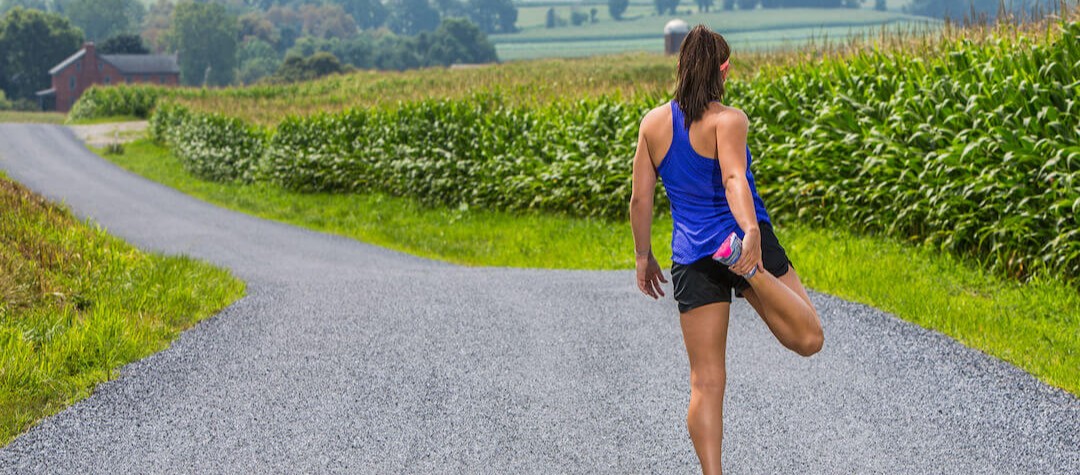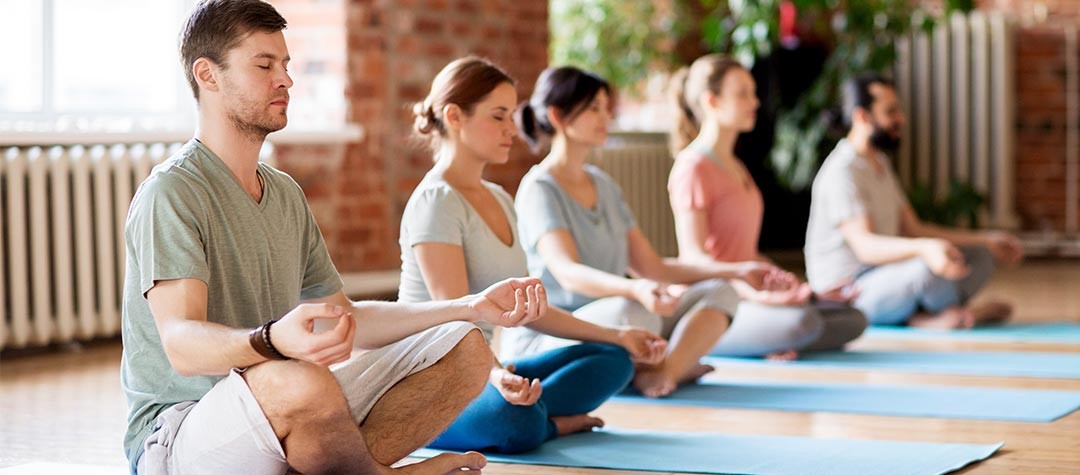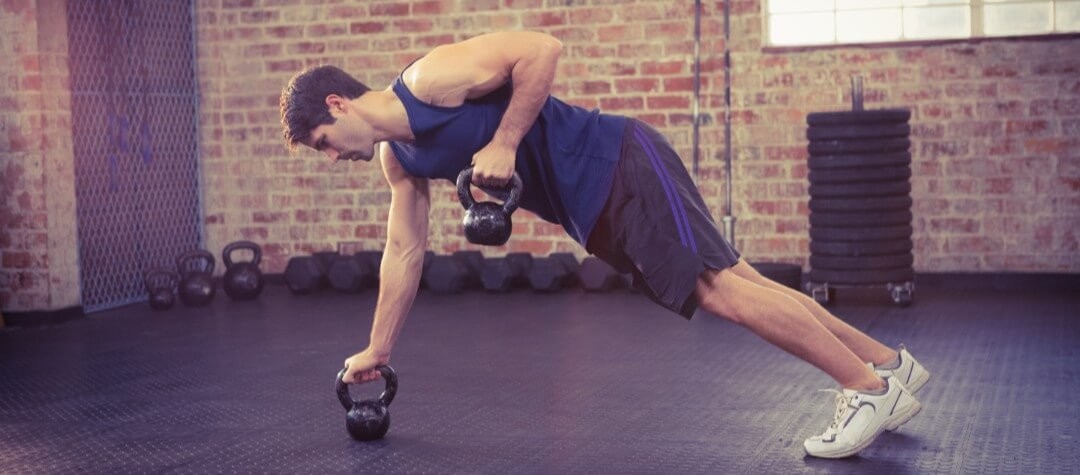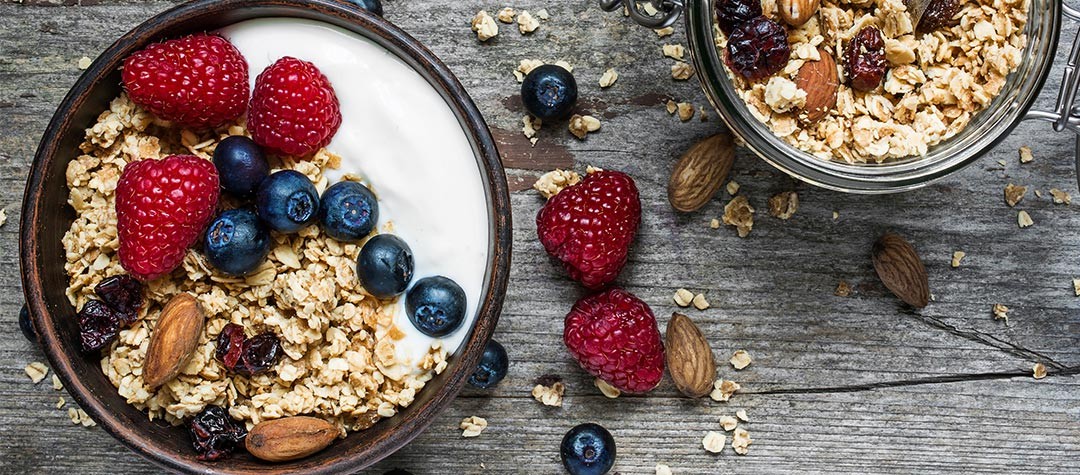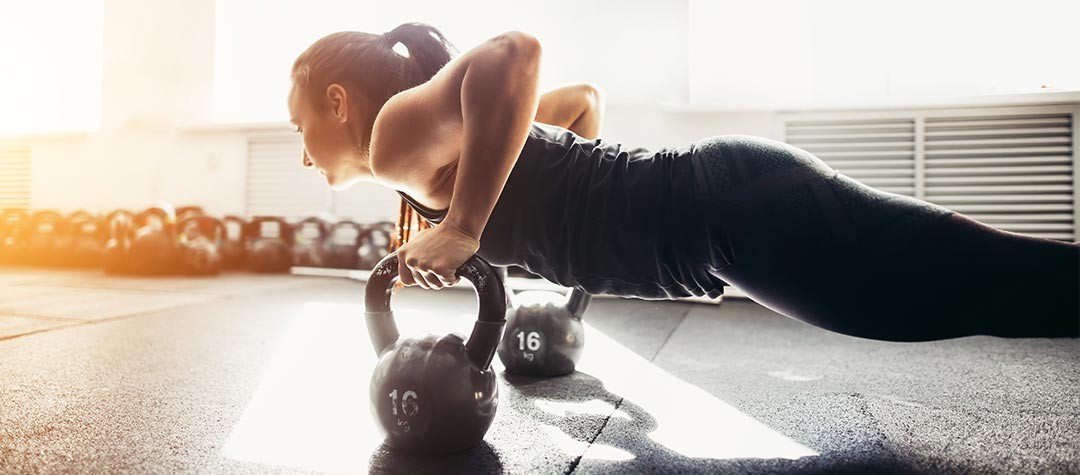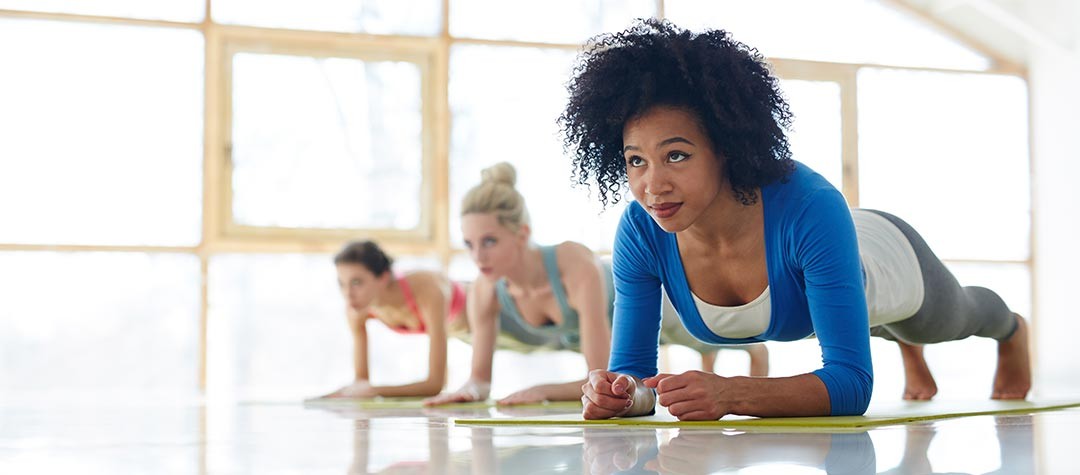Wanting to improve you general body flexibility but not sure where to start? This guide to 10 important flexibility exercises will help you out.
Stretching is an important part of exercise, to warm the muscles up and limber the joints before exercise, and stretch out the muscles to their original size and help blood flow to muscles for recovery after exercise. However, we sometimes forget the importance of basic stretches in exercise; helping prevent potential injuries and aid recovery.
Follow these basic stretches for the major muscles groups and you will never miss a stretching warm-up or cool-down again. You should stretch to the point at which you feel tension and a slight pulling sensation in the muscle but not pain. Aim for 15-30 seconds to improve flexibility and ideally repeat each stretch twice.
1. Hamstrings stretches
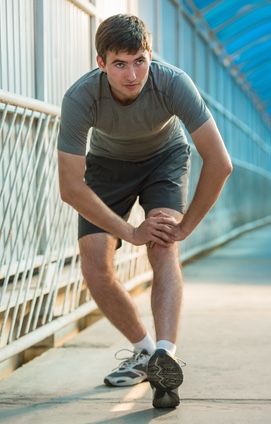
Important after any leg or cardio workout, if the hamstrings have not been stretched properly, this will cause tightness when walking or standing and can easily lead to a pulled hamstring when continuing with other exercise. Standing up, put your right leg out a stride in front out, heel on the floor and foot flat pointing diagonally upwards. Bend the left knee so your thighs are parallel. Shift your weight to the left leg and place your hands on the left thigh above the knee, for support. Lower your torso until you feel a stretch in the right hamstring. Your pelvis should be tilted upwards, so you backside arches out and up to engage the hamstring. The back should remain straight and flat. Repeat with the other leg.
2. Quads stretches
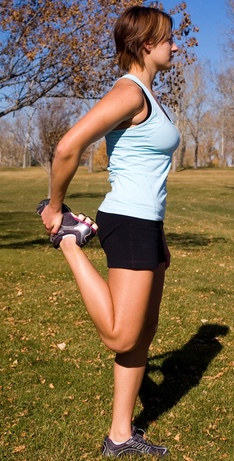
Particularly after squat or leg exercises, or a bike workout, stretching out the front thigh muscles, the major muscle of the leg, is important to keeping the major muscle of the leg working smoothly and fluidly. Stand tall with feet parallel at hip width apart and then lift your right heel, holding it with your right hand, bringing it towards your buttocks. Keep the pelvis in a neutral position and gently press the foot into your hand, keeping knees close together. It doesn’t matter if you're stretching thigh is in front of the supporting one (this indicates tightness), as long as you feel a stretch. Swap sides. If you need to stretch further, keeping your knees together move the pelvis forward and squeeze the buttocks.
3. Hip flexors stretches
From a lunge position on the floor, with the right foot forward, take your left back knee to the floor with the lower leg extended behind it, and adjust your position so that your pelvis is in neutral and your right leg bent at a right angle. You can support yourself with your hands on the floor or on the front thigh (not the knee). Lean into the stretch by shifting your weight to the right leg and moving your body forward, you should feel a stretch along the front of the left thigh and hip. Swap legs and stretch the left hip. You can add in a back stretch to this movement by finding your balance, raising your arms up and behind your head, arching your back with them.
4. Calf stretches
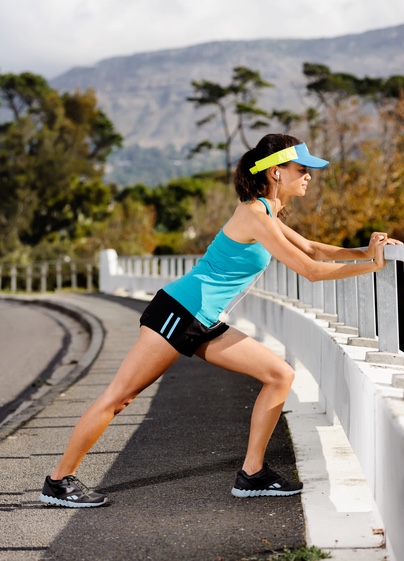
Standing in front of a wall, take a lunge forward with the left leg, keeping the right leg straight out behind you, with the heel on the floor, it is important that your heel remains planted. Feet should both be pointing directly forward or the toes pointing slightly inwards. Use the wall for support and keep your pelvis in line with your back (your bum shouldn’t be sticking out!) Now stand on a step or curb with your right heel overlapping the back edge of it. Bend at the knees and hips and, keeping most of your weight on the left leg, gently press the right heel down, simultaneously pulling the toes up. Repeat both stretches on the left leg.
5. Gluteals stretches
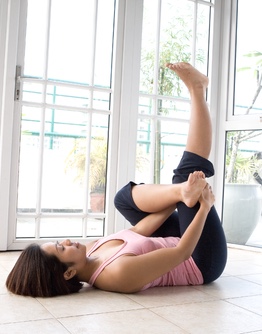
Sitting on the floor, put you right leg across your left leg, just above the knee, so the top of your flat right foot should be parallel with your left leg. Reach your right arm through the gap between your right and left legs and grab your left shin along with your left hand. Bending your left knee, bring your left knee closer to your chest, along with the right leg and lie your back onto the floor. It will feel as if you're doing some form of karate hold, keeping your legs close to the chest. You should feel a stretch in the glutes and outer thigh. Reverse legs and hand and stretch out the left glute.
6. Lower back stretches
Begin on all fours, hands under shoulders, knees under hips, head in line with spine. First, extend the spine by arching the back gently, opening the chest, lifting the head and tilting the hip bones backwards. Pause, then go back through the start position into a rounded position, dropping the head, opening the back of the shoulders and tucking the hips under. Gently pull in the tummy. In yoga this is called the “cat and cow”, as when you do the first movement you arch your back like a cow, and reversing inwards curving the back like a cat.
7. Chest stretches
Stand in a neutral position with fingers interlocked bend your back, palms facing inward, now reverse the hands, flipping them outwards, so the palms are facing the ground. Push your interlocked hands towards the floor, bringing the shoulder blades together and backwards. Stick your chest out as you do this movement to ensure the chest muscles are stretched in a backwards direction.
8. Upper back stretches
Clasp your hands together, palms facing your body and push the arms away from you, feeling a stretch along the back of the shoulders and upper back. Imagine you are holding a large barrel and it is expanding, pulling the shoulder blades forwards, aim to make your upper back into a ‘C’ shape. The general movement aiming the move the shoulder blades away from each other. Sometimes curving the back over can help get this shape but keep the core engaged when doing so.
9. Triceps stretches
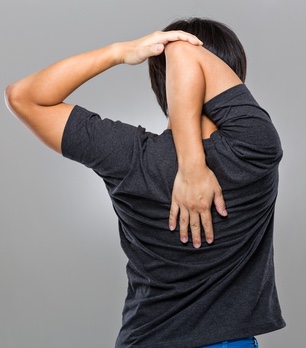
Raise your right arm overhead, palms facing behind you and allow the upper arm to drop down behind your back. Your right palm should be facing the back of your neck. Now take the left hand up and gently push the right elbow back until you feel a stretch along the back of the right arm. If this doesn't work you can let your left hand drop to your side, and reach behind so the back of your hand is against your back. Join the hands together and gently pull down with your left hand to feel the stretch in the back of your right arm. Swap sides.
10. Shoulder stretches
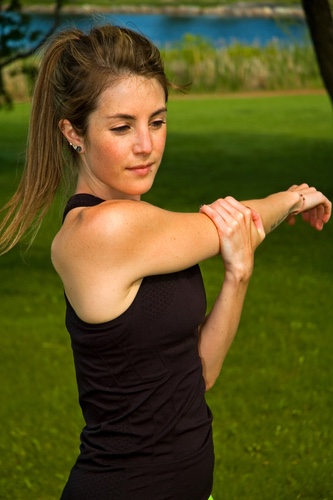
Bring your right arm across the body, just below shoulder height, and use your left hand (holding above the right elbow) to gently press the arm towards the chest. You can use the upper back muscle to push the shoulder forward and down to engage the shoulder muscle more and stretch the upper back. Don’t hunch the shoulders up when doing the stretch and swap sides. If this isn't enough of a stretch, hold onto a frame or pole with your right hand, the right arm coming across the body in a similar fashion, and twist the upper body to the right, keeping hold of the bar or frame, until you feel a stretch.
How often to stretch?
The American College of Sports Medicine recommends that a full body stretch should be carried out at a minimum of two to three times per week and ideally after a workout, when your muscles are nice and warm. But if you can find time to complete a full body stretch more often then do it by all means. Attending a yoga or pilates class is also a great way to add a much needed stretch, loosen up the body, get the muscles filled with blood and even help with some much needed relaxation.

